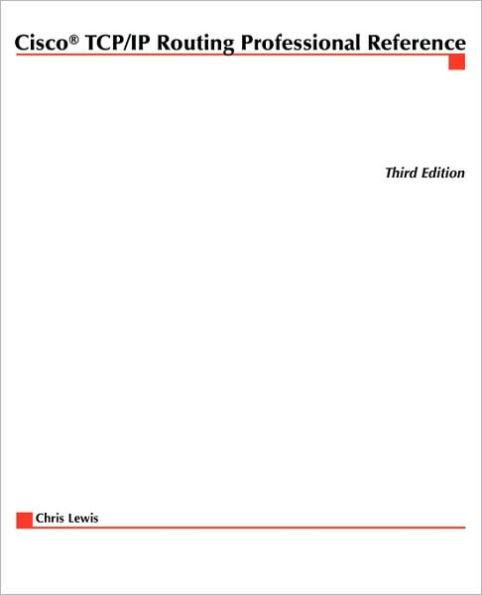Read an Excerpt
Chapter 1: Router Basics
Objectives
The objectives of this chapter are as follows: Explain the role of a router in an internetwork. Discuss how a router is both similar to and different from other network computing devices. Introduce the Cisco router user interface.
Router Concepts
This section introduces router technology and its responsibility in an internetwork, an accepted networking industry term for a set of many interconnected networks. Each individual network will have its own network number that must be unique for that particular internetwork. If some of the terms used here are unfamiliar, don't worry; all the ideas presented in this overview are discussed in more detail and explained fully in later chapters.
Routers direct traffic through an internetwork, based on information learned from network protocols. Let's discuss some of the goals of these computer network protocols.
With an internetwork that has hundreds or even thousands of computers linked together, there has to be some agreed-upon way for those devices to address one another and communicate. As a network grows larger, it is not feasible for each computer to keep track of the individual address of every other computer on the internetwork. There must be some scheme for reducing the amount of information each computer has to hold locally in order to communicate with every other computer. The scheme used involves splitting an internetwork into many discrete but connected networks, which may themselves be split into subnetworks (Fig. 1-1). The job of keeping track of these discrete networks is then given to specialized computers called routers Using this method, the networkcomputers need only keep track of the networks on the internetwork, rather than keeping track of every network computer. The best analogy I can think of for describing how computers on an internetwork address each other is the postal service. When you address a letter, you provide an apartment number, street name and number, town, and state. In computer terms, messages are delivered by application port number, host number, subnet number, and network number (Fig. 1-2). These terms will be discussed fully in subsequent sections.
The key concept is that when the postal service receives a letter for delivery to another town, the first thing postal workers do is to send it to the distribution office in the destination town. From there the letter goes to the people that deliver for that particular street, and finally, the letter is delivered to its destination.
Computer networks follow a similar process. The message sent on the internetwork initially gets sent to a router that is connected to the destination network number. This router, in effect acting as a distribution center for this network, will send the message out on the destination subnet number, and finally the message is delivered to the destination port number in the destination machine. Figure 1-3 shows a simple internetwork with routers connecting different network numbers. In this figure, networks 1, 2, 3, and 4 have hosts on them and networks 5, 6, and 7 do not. Networks 5, 6, and 7 are there purely to connect the routers over a local or wide area network. In this internetwork, hosts X and Z must be configured for the same network number (in this case, 2). In addition, the router interfaces that are connected to the same network (for example, interface 2 on router C and interface 1 on router A), must be configured for the same network number (in this case, 5)...



